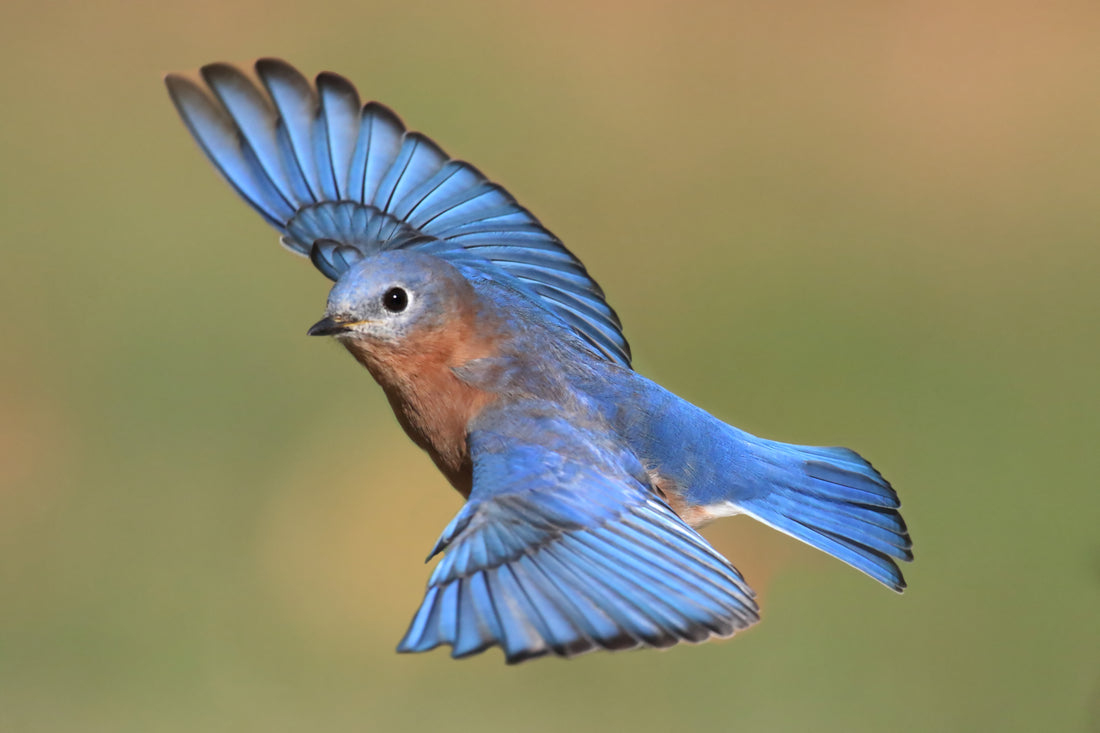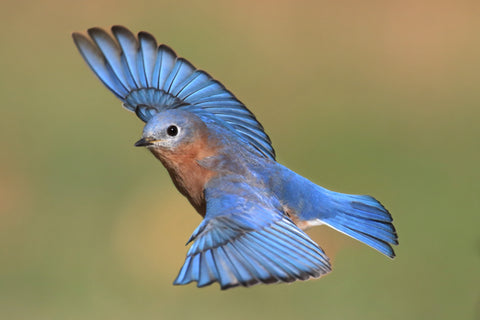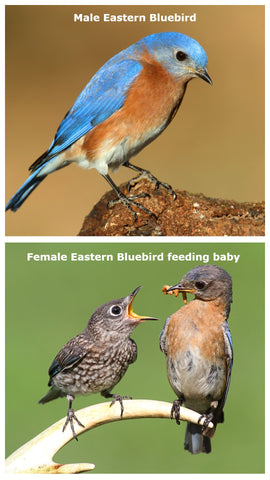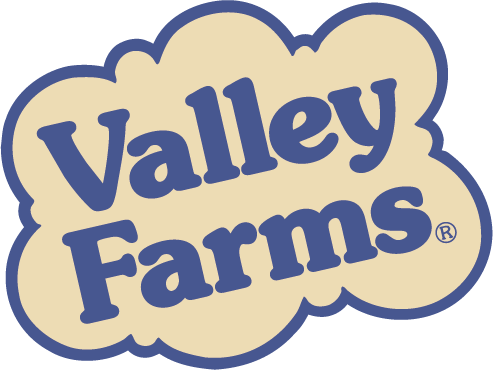
Wild Bird Feature: All About the Eastern Bluebird
Share

Take a scenic drive along the eastern section of North America in the summer and you’ll likely come across at least several Eastern Bluebirds. The Sialia sialis, more commonly known as the Eastern Bluebird, is part of the Thrush family of birds. Some think bluebirds are symbolic of joy and hope, while others attribute seeing them to a sign that good news is on its way. Whatever you believe, one thing is for certain: the Eastern Bluebird is truly a thing of beauty. Learn more about them here!
Where to Find Eastern Bluebirds
The Eastern Bluebird’s range extends across eastern North America and goes as far south as Nicaragua. This small thrush is a permanent resident in many areas across the southeastern part of the United States, primarily in semi-open areas like forest clearings and open pine woods. The typical habitat of the non-nesting Eastern Bluebird could be a grassland farm, a roadside, or anywhere with patchy vegetation and large trees. This bird also happens to be fond of meadows and golf courses. They are frequently found perched atop power lines or on fences.
When nesting, however, Eastern Bluebirds tend to gravitate towards nest boxes and birdhouses erected specifically for them on bluebird trails. 
Characteristics of the Eastern Bluebird
With their size in between that of a sparrow and a robin, Eastern Bluebirds tend to be on the smaller side. They have round heads, large eyes, plump bodies, long wings, short tails and legs, and an alert posture. Male Eastern Bluebirds are characteristized by the stunning royal blue hue that covers their backs and heads, with warm, reddish-brown coloring on the breast. Females have blue-tinged wings and tails, with a more gray-blue appearance and orangey-brown coloring on the breast.

The Call of the Eastern Bluebird
With a short, wavering voice, the Eastern Bluebird has a soft, low-pitched call that lasts less than one second. Listen to it on YouTube here!
What and How Eastern Bluebirds Eat
Known for being ground foragers, these little guys and gals love their insects and berries. They’ll tuck into most insects, but have a special liking for crickets, grasshoppers, beetles, spiders, earthworms, and snails. Eastern Bluebirds also have an affinity for berries, especially in the winter. These birds do a lot of foraging by perching low and fluttering about the ground to snatch up their food. In fact, they usually don’t even land to catch their prey, but hover to pick up food items and catch insects mid-air. It is common for this bird to abruptly drop to the ground to gobble up an insect they deem appetizing.

Attracting the Eastern Bluebird to Your Yard
Despite being infrequent visitors to bird feeders, Eastern Bluebirds will come around if you offer up mealworms. Valley Farms® Natural Dried Mealworms make the perfect treat for bluebirds and other wild bird species. The ideal spring time snack, our Natural Dried Mealworms provides a healthy source of protein for wild birds.
Valley Farms Natural Dried Mealworms 1LB
$19.95
100% Natural Dried Mealworms can be a treat for bluebirds and other wild bird species.
VALLEY FARMS ® MEALWORM TREATS
-troughs, feeders, forage treat, ground feeding-
STORE IN A COOL, DRY PLACE
NOT FOR HUMAN CONSUMPTION
Pair with the Bluebird & Oriole Buffet Bird Feeder and serve with mealworms, berries, or fresh apples and oranges.
Bluebird & Oriole Buffet Bird Feeder
$22.80
- Optimum Perching Space: A continuous ring allows for optimal perching space for multiple birds.
- Protective Baffle: This feeder comes with a clear protective baffle that can be assembled to the hanger to better shield the feeder from weather while maintaining optimal bird viewing.
- Multiple Feeding Options: Simultaneously feed a combination of mealworms or seed and fruit or suet options to serve up a variety for your birds!
- Fruit Ideas: Try apples, oranges, and sugarless all natural grape jelly
Feed to Use: Mealworms, suet, fruit slices, dried fruit, black oil sunflower, hulled sunflower, mixed seed
Attracts: Bluebirds, Wrens, Orioles, Robins
Keep the Eastern Bluebirds healthy and nourished in your neck of the woods with wild bird feed from Valley Farms®! Shop with us today!


